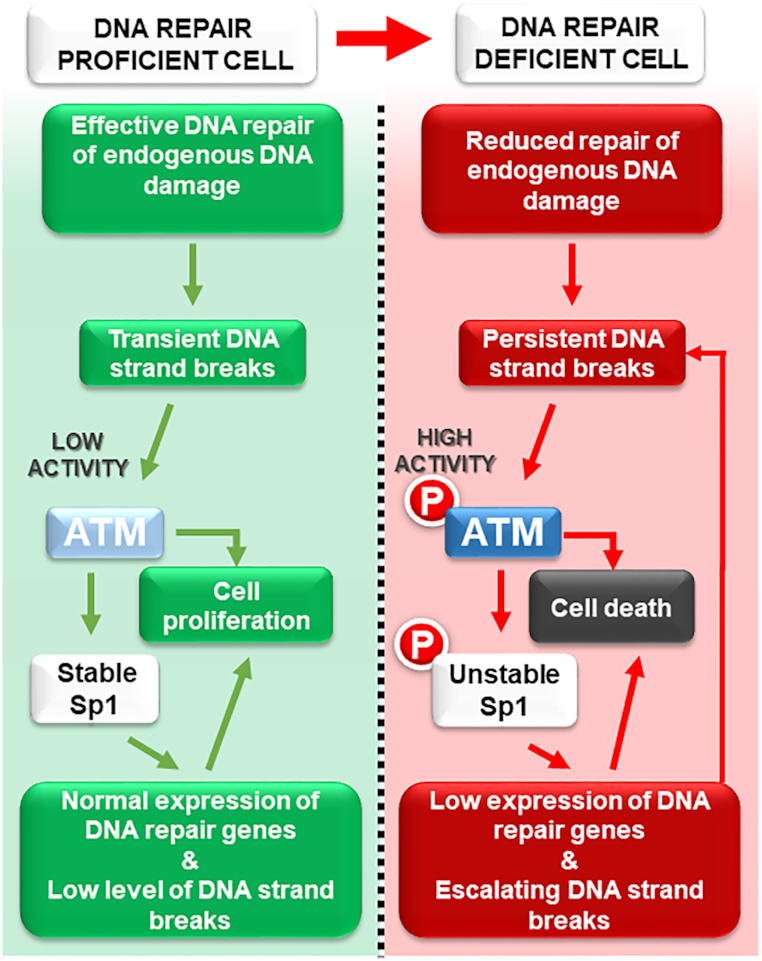Figure 1.

Detection and elimination of DNA repair deficient cells. Adapted from Fletcher et al. (27). Left: In a DNA repair proficient cell (normal cells), DNA damage is kept in check by sufficient DNA repair mechanisms. Low ATM activity ensures stable Sp1 protein levels, promoting the efficient expression of DNA repair genes. Right: Persistent unrepaired DNA damage can arise under conditions of excessive exogenous DNA damage, or a DNA repair deficiency (found in many cancer cells) as well as from oncogene-induced replication stress (49,50). This leads to ATM activation, which triggers Sp1 phosphorylation and subsequent degradation that in turn leads to reduced expression of DNA repair genes. Under these circumstances, the cellular load of DNA damage is worsened by the decreased expression of DNA repair genes, leading to sustained ATM phosphorylation and, ultimately, activation of a proapoptotic cascade and cell death.
